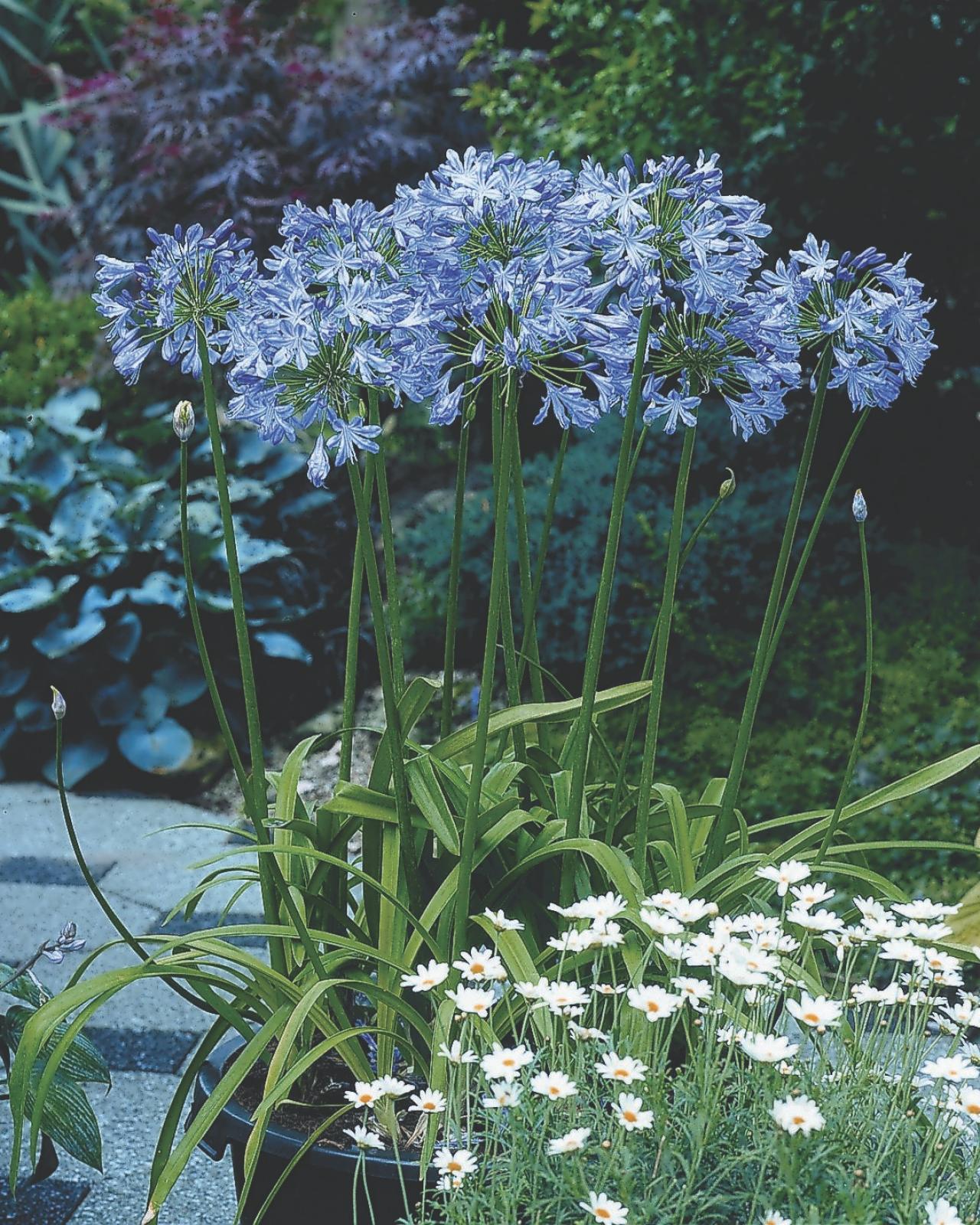Agapanthus Expanding Problems: Soil, Sunlight, and Watering
Unleashing the Secret to Effective Agapanthus Growing: Idea for a Flourishing Garden
In the world of gardening, growing agapanthus successfully needs a strategic technique that encompasses numerous elements of plant care. With careful focus to detail, one can open the secrets to supporting these stunning flowers, bring about a garden that prospers with charm and vibrancy. By recognizing the nuances of agapanthus growing, one can develop an environment where these plants prosper and bloom generously. In the complying with discussion, we will certainly discover crucial suggestions and tricks that will assist you towards a flourishing agapanthus garden, supplying insights into ideal techniques, soil problems, sprinkling methods, and extra.
Planting Agapanthus: Best Practices
When planting Agapanthus, proper soil preparation is crucial for ensuring successful growth and development of these stunning flowers. Agapanthus, frequently referred to as Lily of the Nile or African lily, grows in well-draining dirt with a somewhat acidic to neutral pH level - Agapanthus. Prior to growing, it is crucial to modify hefty clay dirts with raw material such as garden compost or peat moss to boost drain and offer vital nutrients for the plants
To grow Agapanthus, choose a location that receives full sunshine to partial color, as this will promote healthy development and plentiful flowering. Dig a hole twice the diameter of the plant's root ball and put the Agapanthus at the very same deepness it was formerly growing. Gently backfill the hole with dirt, pushing down firmly to remove any air pockets around the roots.
Water the freshly grown Agapanthus completely and remain to maintain the dirt uniformly damp, especially during the plant's energetic expanding period. Agapanthus. Using a balanced plant food once a month can better support the plant's growth and blooming. By complying with these ideal practices for planting Agapanthus, you can create a stunning display of these exciting flowers in your yard
Suitable Soil Issues for Agapanthus
For optimum development and flowering success of Agapanthus plants, making certain the dirt conditions are optimal is critical. Agapanthus prospers in well-draining dirt with a slightly acidic to neutral pH degree ranging from 6.0 to 7.0. This sort of dirt allows for adequate water drain, avoiding waterlogging which can cause root rot. To improve soil drain, consider adding raw material such as compost or peat moss when preparing the growing site. Moreover, Agapanthus chooses dirt that is rich in nutrients, so including a balanced plant food during the expanding season can promote healthy and balanced growth and lively blooms.

Watering and Fertilizing Tips
To guarantee healthy development and vivid flowers, proper watering and fertilizing techniques are essential for effective Agapanthus growing. Agapanthus plants benefit from regular watering, specifically during the growing period.
When it concerns feeding Agapanthus, a balanced fertilizer with equivalent parts nitrogen, phosphorus, and potassium can be used in the springtime to promote healthy development and blooming. Slow-release fertilizers are ideal for giving nutrients slowly over a prolonged period. Stay clear of over-fertilizing, as this can result in too much click reference vegetation growth at the cost of blooms.
In addition, integrating natural issue like compost right into the soil can improve nutrient levels and enhance dirt framework, aiding in the total health and wellness of the Agapanthus plants. By following these watering and feeding suggestions, gardeners can guarantee their Agapanthus plants thrive and create stunning display screens of flowers.
Trimming and Deadheading Methods
Correct trimming and deadheading techniques play a vital function in maintaining the health and wellness and visual appeals of Agapanthus plants, enhancing the vital practices of watering and fertilizing for successful growing. Trimming Agapanthus entails getting rid of spent flower heads, dead or yellowing leaves, and total shaping of the plant to advertise better growth. Deadheading, the process of getting rid of faded flowers, not just enhances the plant's appearance but additionally encourages more growing.
When deadheading Agapanthus, it is advisable to snip off the flower stem at the base utilizing sharp, clean shears. This procedure reroutes the plant's power from seed manufacturing back into origin and vegetation growth, advertising a much healthier and a lot more durable plant. Regular deadheading can prolong the blooming period of Agapanthus and stop self-seeding, which can bring about congestion.
In regards to trimming, Agapanthus normally take advantage of a light trim after flowering to tidy up the plant and encourage fresh development. Reducing the spent flower stems and eliminating any type of dead or broken foliage helps maintain the plant's vigor and total look. Nonetheless, it is crucial to stay clear of cutting into the crown of the plant, as this can compromise its health.

Protecting Agapanthus From Vermins and Diseases
Carrying out effective pest and condition administration strategies is vital to protecting the wellness and vitality of Agapanthus plants in cultivation. One usual insect that affects Agapanthus is the Agapanthus borer, a caterpillar that passages into the plant, creating damages to the flowers and fallen leaves.
In addition to pests, Agapanthus are at risk to illness such as origin rot and fungal leaf areas. These issues can typically be stopped by ensuring appropriate drain and staying clear of overwatering. Affected components of the plant need to be promptly removed to avoid more spread if indications of disease appear. Fungicides may additionally be used as a therapy action, following the producer's directions carefully. By remaining vigilant and addressing parasite and condition concerns promptly, garden enthusiasts can aid their Agapanthus prosper and grow.

Conclusion
Finally, successful growing of agapanthus needs proper growing techniques, excellent dirt problems, ample watering and feeding, normal trimming and deadheading, and security from bugs and illness. By adhering to these methods and ideas, gardeners can guarantee a growing yard filled up with beautiful agapanthus blooms. Agapanthus. Remember to see this website maintain constant treatment and focus to detail to promote the wellness and long life of these magnificent plants
When planting Agapanthus, proper soil prep work is crucial for making sure successful growth and growth of these attractive flowers.Water the freshly grown Agapanthus thoroughly and proceed to maintain the soil equally damp, especially throughout the plant's energetic growing season.For ideal growth and growing success of Agapanthus plants, guaranteeing the dirt problems are perfect is crucial. When hair transplanting or planting Agapanthus, ensure the dirt is well-prepared to offer the needed structure for the plants to develop themselves efficiently. One typical bug that impacts Agapanthus is the Agapanthus borer, a caterpillar that tunnels right into the plant, triggering damages to the fallen leaves and flowers.